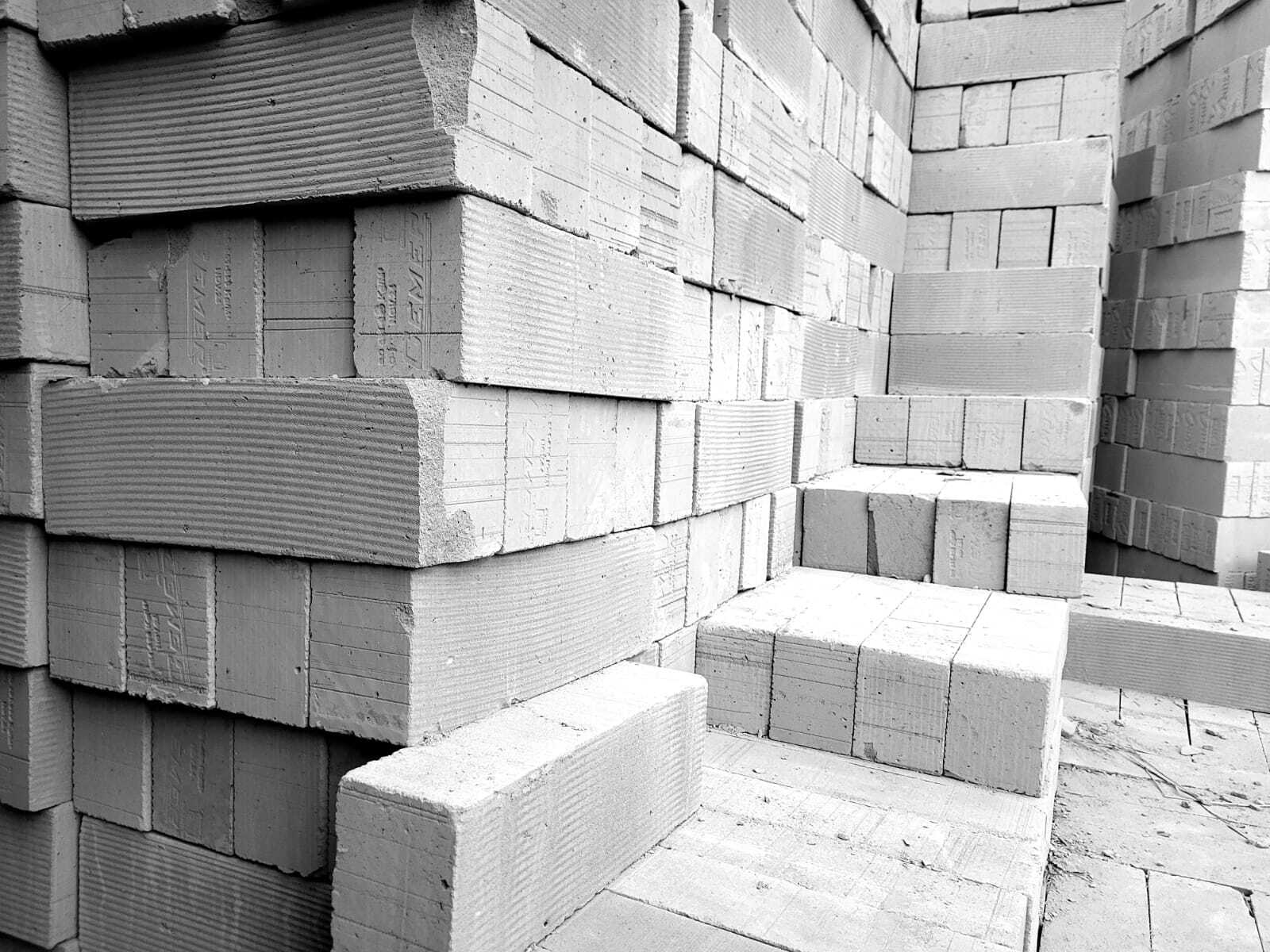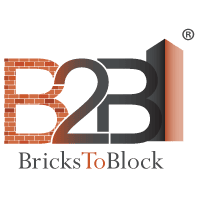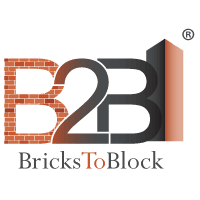Introduction:
Setting the Stage: The Evolution of Building Materials
Since the dawn of civilization, humanity has continuously sought better, more efficient ways to construct shelters and structures. From humble beginnings using mud and straw to the sophisticated engineering marvels of today, the journey of building materials has been one of constant innovation and adaptation. Over the centuries, materials such as wood, stone, clay, and concrete have dominated the construction landscape, each offering its own set of advantages and limitations.
However, as the world grapples with pressing environmental concerns and the need for sustainable development, the construction industry is undergoing a paradigm shift. Traditional building materials, while reliable, often come with drawbacks such as high energy consumption, limited insulation properties, and significant environmental impact. In response to these challenges, a new contender has emerged – Autoclaved Aerated Concrete (AAC) blocks.
The Rise of AAC Blocks: A Revolutionary Addition
AAC blocks represent a significant leap forward in the realm of building materials. Developed in the early 20th century, AAC blocks have gained widespread recognition for their exceptional properties and versatility in construction. Unlike conventional materials, AAC blocks are lightweight, highly insulating, fire-resistant, and eco-friendly. Their unique composition, coupled with an innovative manufacturing process involving steam curing, sets them apart as a game-changer in the construction industry.
In this blog, we will delve into the myriad advantages offered by AAC blocks over traditional building materials. From energy efficiency and thermal insulation to durability and design flexibility, we will explore how AAC blocks are reshaping the way we build. Through real-life applications, case studies, and a critical examination of misconceptions, we will uncover the true potential of AAC blocks in fostering sustainable, resilient, and aesthetically pleasing structures.
Join us on this journey as we unravel the revolutionary addition of AAC blocks to the construction landscape and explore the boundless possibilities they offer for the buildings of tomorrow.
vantages of AAC Blocks:
1. Lightweight Champion: Ease of Handling and Transportation
· AAC blocks are significantly lighter than traditional building materials, making them easier to handle, transport, and install.
· Reduced labor requirements and lower transportation costs contribute to overall cost savings.
2. Energy Efficiency: A Green Revolution
· AAC blocks possess excellent thermal insulation properties, reducing the need for artificial heating and cooling.
· Lower energy consumption translates to reduced carbon emissions and environmental impact, aligning with sustainability goals.
3. Thermal Insulation: Keeping You Comfortable Year-Round
· The cellular structure of AAC blocks traps air, providing superior thermal insulation and maintaining comfortable indoor temperatures.
· Reduced heat transfer minimizes energy loss, enhancing energy efficiency and lowering utility bills.
4. Sound Insulation: Creating Serene Spaces
· AAC blocks offer exceptional sound insulation, effectively blocking out external noise and creating peaceful indoor environments.
· Ideal for residential, commercial, and industrial buildings where noise reduction is essential for comfort and productivity.
5. Fire Resistance: Safety at Its Core
· AAC blocks are non-combustible and possess high fire resistance, offering superior protection against fire hazards.
· Ideal for constructing fire-rated walls and structures, ensuring the safety of occupants and minimizing property damage in the event of a fire.
6. Durability: Standing the Test of Time
· AAC blocks are highly durable and resistant to weathering, erosion, and pests, ensuring long-term structural integrity.
· With minimal maintenance requirements, AAC structures retain their strength and appearance for decades, reducing lifecycle costs.
7. Eco-Friendly Credentials: Reducing Carbon Footprints
· AAC blocks are manufactured using sustainable raw materials, such as fly ash, cement, lime, and aluminum powder.
· The manufacturing process produces minimal waste and consumes less energy compared to traditional building materials, reducing carbon footprints.
8. Design Flexibility: Realizing Architectural Dreams
· AAC blocks offer versatility in design, allowing architects and builders to realize a wide range of architectural styles and configurations.
· With AAC's compatibility with various finishes, textures, and coatings, creative possibilities are virtually limitless.
Comparing with Traditional Building Materials:
· AAC Blocks vs. Clay Bricks: The Battle of Weight and Insulation
· AAC blocks are lighter than clay bricks, facilitating easier handling, transportation, and installation.
· While both materials offer insulation properties, AAC blocks provide better thermal and sound insulation due to their cellular structure.
· AAC Blocks vs. Concrete Blocks: A Clash of Strength and Sustainability
· AAC blocks offer comparable strength to concrete blocks but with significantly lower density, resulting in reduced structural dead load.
· The energy-efficient manufacturing process of AAC blocks contributes to lower carbon emissions and environmental impact compared to concrete blocks.
· AAC Blocks vs. Red Bricks: Tradition Meets Innovation
· AAC blocks provide superior thermal insulation and soundproofing compared to red bricks.
· While red bricks have a long history and aesthetic appeal, AAC blocks offer modern construction solutions with enhanced performance and sustainability.
By examining these comparisons, it becomes evident that AAC blocks offer a compelling alternative to traditional building materials, combining superior performance, sustainability, and design flexibility.
Misconceptions about AAC Blocks:
1. High Initial Cost: One common misconception is that AAC blocks are more expensive than traditional building materials like clay bricks or concrete blocks. While the upfront cost of AAC blocks may be slightly higher, their long-term benefits, such as energy savings, reduced maintenance, and durability, often outweigh the initial investment.
2. Weakness: Some people mistakenly believe that AAC blocks are not as strong as traditional materials like concrete or clay bricks. In reality, AAC blocks have excellent compressive strength and can withstand significant loads. Additionally, their lightweight nature can actually reduce structural dead load, making them advantageous in certain applications.
3. Limited Applications: There's a misconception that AAC blocks are only suitable for certain types of construction projects or climates. However, AAC blocks are versatile and can be used in various applications, including residential, commercial, and infrastructural projects, as well as in both hot and cold climates.
4. Poor Aesthetics: Another misconception is that AAC blocks lack aesthetic appeal compared to traditional materials like red bricks. In fact, AAC blocks come in a variety of sizes, shapes, and textures, and can be finished with plaster, paint, or cladding to achieve a wide range of architectural styles.
5. Environmental Impact: Some may mistakenly believe that AAC blocks are not environmentally friendly due to their use of cement in the manufacturing process. However, AAC blocks use less cement compared to traditional concrete blocks, and their lightweight nature reduces transportation emissions. Additionally, AAC blocks often incorporate recycled materials, such as fly ash, further enhancing their eco-friendliness.
Future Trends and Innovations in India:
1. Research and Development: Pushing the Boundaries
· Indian institutions and companies are investing in research and development to enhance the properties and performance of AAC blocks specifically tailored to the Indian climate and construction practices.
· Innovations may focus on optimizing formulations, manufacturing processes, and additives to improve strength, insulation, and cost-effectiveness.
· Collaboration between Indian universities, research institutions, and industry stakeholders is crucial for driving innovation and addressing local challenges.
2. Market Expansion: Growing Domestic Demand and Export Opportunities
· India's booming construction sector and increasing focus on sustainable development are driving the demand for AAC blocks domestically.
· Emerging urbanization trends, government initiatives such as "Housing for All" and "Smart Cities," and the growing middle class contribute to the expanding market for AAC blocks.
· Indian manufacturers are also exploring export opportunities, leveraging the country's expertise in AAC technology and competitive production costs to tap into international markets.
3. Sustainable Practices: Aligning with India's Environmental Goals
· With India's commitment to reducing carbon emissions and promoting sustainable development, AAC blocks are gaining traction as an eco-friendly building material.
· Indian AAC block manufacturers are adopting sustainable practices such as energy-efficient manufacturing processes, utilizing renewable energy sources, and incorporating recycled materials.
· Certifications such as IGBC (Indian Green Building Council) and GRIHA (Green Rating for Integrated Habitat Assessment) encourage the adoption of AAC blocks in green building projects across India.
Conclusion:
Embracing the Future: AAC Blocks as India's Building Material of Choice
· AAC blocks offer India a sustainable and efficient solution to address the growing demand for affordable housing, infrastructure development, and urbanization challenges.
· With their lightweight nature, thermal insulation properties, and durability, AAC blocks are well-suited to meet the diverse construction needs of India's rapidly evolving landscape.
· By embracing AAC technology, India can accelerate its journey towards sustainable development, resilience, and inclusive growth in the built environment.
Top of Form

